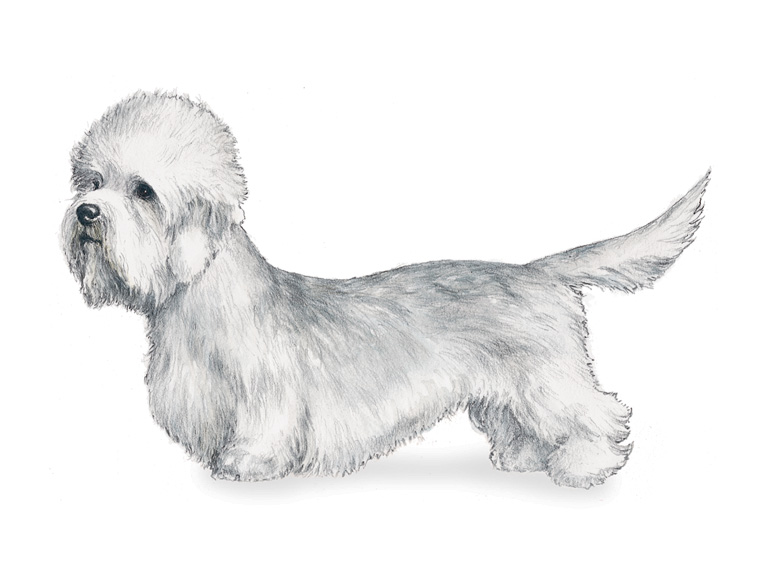

The Dandie Dinmont Terrier originated as a hunter, designed to “go to the ground” for otters, badgers, and other small to medium-sized quarry. They were officially recognized as a breed around 1700 and have enjoyed popularity with both gypsies and aristocrats during various periods in their history. They rose to fame in 1814, when Sir Walter Scott wrote about them in Guy Mannering. They are very recognizable, with their long, low-slung bodies, “scimitar” tail, soulful eyes, and a fluffy topknot of curly hair. While small in size, they have the confidence of a much larger dog as well as intelligence and independence to match. Affectionate and good-natured, they make good family pets but may not be outgoing with strangers. They do not shed but require daily brushing and twice-yearly stripping. A daily walk will keep them fit and happy.
Each AKC approved purebred breed has its own national club. The mission of these “parent breed clubs” is to improve and preserve a particular breed by advancing knowledge about its history, its health and care requirements and by assuring that the breed’s form and function remain true to its historical physical type and character: A Dalmatian, for instance, should be athletic and have a natural affinity for working with horses. A Fox Terrier should have the right body size and shape, and a drive to go after vermin.
Pet owners, breeders, trainers, veterinarians, and others with a special love for a breed, join the parent breed club to meet like-minded enthusiasts and to support the club’s mission.
The national parent breed club is the first place for the public to go to learn about a breed or find a knowledgeable, experienced breeder.
 Discover Animals is a web-based educational resource offered by the NAIA
Discover Animals is a web-based educational resource offered by the NAIA